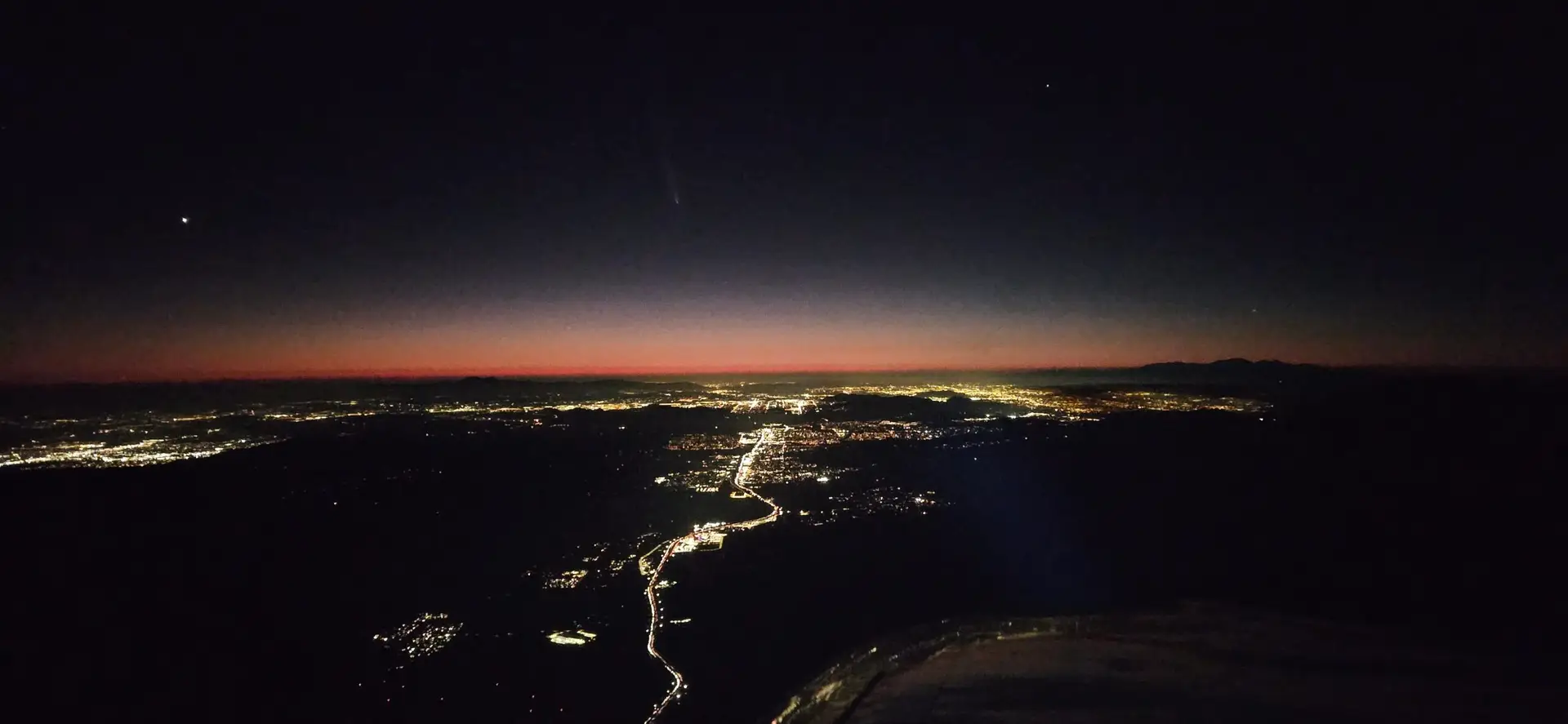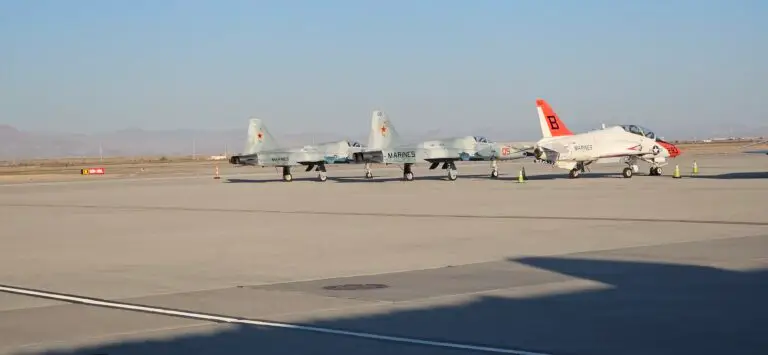I don’t like delays, for anything. There are so many great things about flying private, and one of those is setting your own schedule. You don’t have to arrive two hours before departure, put up with TSA, get crammed in next to someone you don’t know, and the list goes on and on. Getting back to the “setting your own schedule,” I’m not a fan of delays that interfere with my plans.
My wife and I decided to go back to Arizona to see my parents and help out. I worked most of the late afternoon for the 2-mile drive to the airport and met my wife there. We were airborne at 4:28pm and with the benefit of a slight tailwind landed at Mesa Gateway two hours and eighteen minutes later on a shortened 30L. The normally 10,401’ runway 30L was shortened to 3,200’ which is still plenty of room for my Mooney but after all the other times landing on that runway it looked odd to see the red lights marking the end of the runway so close when we touched down.
The visit was great, we had Friday evening, all day Saturday, and what would turn into most of the day Sunday with my parents. Back to planning my own schedule. We were going to leave for the airport about 3pm which would have us in the air by 4pm and landing in Fullerton about 6:30pm with the forecast winds.
My parents have an in-home caregiver to help out and she was gone taking care of some personal things, which is part of the reason we flew out to visit. She hadn’t said exactly what time she would be back, but she knew what time we wanted to leave and said, “I’ll be back before you need to go.” The afternoon wore on and the time for our departure slowly creeped closer. As 3pm arrived without her return or any word from her we tried reaching out for an ETA with no response. 3pm came and went, and then 3:30pm.
Finally with no word we reached out to her boss. He’s a great guy and we have visited a few times so he knew I flew ourselves but had forgotten.
“Are you flying back?” he asked.
“Yes,” I replied.
“What time is your flight?” was the next question followed quickly by the recollection that we’re in our own plane. “Oh, you are flying yourself, right?”
“Yes, it won’t leave without us,” I said with a smile.
He said he would try and contact the caregiver and if he couldn’t reach her, he would come over himself until she returned so we could get on our way. Like I said, he’s a great guy. A few minutes later he called back to say she had run into some delays beyond her control and was 15 minutes away. There was a lady from church visiting who could stay until the caregiver returned so I scheduled an Uber, and we said our goodbyes.
We arrived at the airport at 4:14pm and I went out to pre-flight the plane, telling my wife to give me about 10-15 minutes before heading out. It was October in Arizona but still 96° F outside, no reason for both of us to sweat it out on the ramp. There are multiple flight schools that operate out of Mesa Gateway, including a huge fleet of planes from UND and it is often very busy, however on a late Sunday afternoon when it is hot outside the only other plane moving was a commercial Allegiant flight taking off. Parked on the ramp were two F5N Tiger II from VMFT-401 Adversary Squadron parked on the ramp with red stars on the tail and missiles on the wing tips next to some Marine T-45 Goshawks.
I was just wrapping up preflight when my wife came walking out to the plane, perfect timing. We started up and began our taxi to the hold short line for 30L at taxiway Kilo. I told ground that I needed a run up and asked if I could do that at the hold short line. With an intersection departure on 30L sometimes they ask for the runup to be done on taxiway Bravo and sometimes at the hold short line. Ground said to do the run up at the hold short line so we stopped there, I did the run up, and then called up tower ready to depart.
I hear some pilots say they never like intersection departures, but never is an interesting choice. If the runway is 10,000’ long and you are in a small GA airplane, do you really need the whole thing? Taking off from the Kilo intersection we still had over 5,500’ of concrete in front of us, which almost as long as the main runway at John Wayne. We were off the ground quickly and climbing out to the southwest to skirt the Phoenix Bravo airspace before turning west and continuing the climb up to 10,500’.
The air was nice and cool with a smooth ride. Early on in my flying I wanted to be over Palm Springs when the sun went down, I didn’t want to be out over the desert with little reference from lights on the ground. As my hours and experience have increased, along with getting my instrument rating a little over three years ago, so has my comfort level flying after dark.
On the ride to the airport my wife had asked, “Will we be over Palm Springs at sunset?”
“No,” I replied doing the math in my head, “probably around Blythe.”
Sure enough, as we approached Blythe the sun dipped behind San Jacinto, 130 miles to the west. As we continued the flight the glow from the sunset continued to fade, outlining the mountains ahead in orange and gold, that slowly faded to yellow, then black, with Venus, the Evening Star, making an appearance. Below the horizon line to the southwest of our route the Salton Sea was reflecting the color from the sky above, like a big puddle of gold.
When you fly cross country you are supposed to monitor the Guard frequency. Guard, 121.5 is the same frequency everywhere across the country. If you miss a frequency handoff, ATC will try looking for you on Guard. If you have an emergency and you aren’t already talking to ATC you can broadcast on Guard. But most of the time there is very little worthwhile information that you hear, unless you think the random choruses of “Guuuaaarrddd” or “meeoowww”, or Chewbacca sounds are worthwhile.
On this flight, there was actually something non-aviation related that was beneficial to me on my flight.
“Hey, does anyone know the name of this comet we are looking at?” came the radio call from a random pilot.
I looked at my wife, “comet?”
We were passing through the Banning Pass at 10,500’ with the ribbon of lights on Interstate 10 below us, and the lights of the Moreno Valley, Inland Empire, and way off in the distance the LA Basin in front of us. I already had the panel lights turned down low but leaned forward in my seat to try and see if I could spot the comet. If it was an airliner that made the call, he was much higher than us and with less light from the ground he could see it easier. But, as I looked out the windshield, there above the horizon in front of us I could see the comet with its tail trailing off behind it. It was beautiful.
Shortly after that we began our descent, but still ahead I could look out and spot the comet. It was so cool, and while I wasn’t thrilled at the delay in Phoenix it was a blessing in the end. If we would have left at the time I wanted, we would have landed in Fullerton and never would have seen the comet. It was only because the sun had set earlier in our flight and some random pilot had made a radio call that we started looking and saw the comet.
Somewhere in there is a lesson about looking for the silver lining when life throws you a curveball and listening to others with a higher vantage point who may be able to show you things that are right there in front of you, but you just didn’t know to look.



